Classical Transcriptions for Orchestra – Grade 3-4 Friday, December 15, 2017
recommended by Dan C., Orchestra Music Specialist
It’s time to get your high school string orchestra music nailed down for spring concerts and festivals – here are some absolute winners! If your high school string orchestra is not quite ready for standard literature that is Grade 5 and up, be sure to pay attention to these excellent classical transcriptions at the Grade 3-4 level. Covering Baroque, Classical, and Romantic composers – and Igor Stravinsky! – you have a plethora of options from among the best new classical transcriptions that are out for the 2017-2018 school year. From symphonies, operas, choral music arrangements and solo features, these pieces all have plenty to offer in terms of teaching elements, generous orchestration and programmability. Don’t miss any of them!
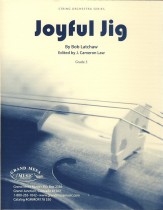 Joyful Jig by Bob Latchaw, Grade 3
Joyful Jig by Bob Latchaw, Grade 3
Probably our favorite piece for 2017, this spritely, original, 6/8 jig morphs into a surprising rendition of Ode to Joy. With short solos for principal first violin and cello, it has tons of fun for everyone and will help reinforce 6/8 time as well as the opportunity to pit 2 against 3. Part independence and accidentals will also encourage maturity within your group. Plus it’s just a great performance piece!
Symphony No. 16 (1st Movement) by F.J. Haydn/arr. Brendan McBrien, Grade 3
Boundless enthusiasm permeates this bright opening movement from Haydn’s 16th symphony composed when he was only 25 years old. This prime example of Haydn’s fondness for using a monothematic structure shows his creative economy in symphonic construction. Upper strings carry the melody, but the lower strings are the absolutely necessary engine and there is plenty to teach with here, including shifting, Classical trills starting on the note and the buoyant Classical style.
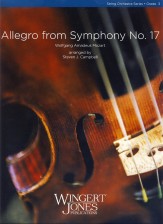 Allegro from Symphony #17 by W.A. Mozart/arr. Steven J. Campbell, Grade 3
Allegro from Symphony #17 by W.A. Mozart/arr. Steven J. Campbell, Grade 3
The youthful energy is contagious when you capture the Mozart style in this offering from when he was merely sixteen! The second of three symphonies he wrote that year, it contains his signature chromatics and a sixteenth/dotted eighth note rhythm that keeps it spritely. Typical of that era, the lower strings primarily provide the (absolutely necessary) “motor” while the upper string carry the melody and close harmony, and it’s the combination of the two that make it magically Mozart!
Pulcinella (Overture) by Igor Stravinsky/arr. Robert D. McCashin, Grade 3.5
It’s not often you can program Stravinsky for a high school string orchestra, so this one is a real treat! Being neo-classic it will not test students’ aural skills too far, but the part independence will keep everyone busy. All parts are absolutely essential and fairly involved, so no one can claim boredom! Enjoy a few short, shiny solos and superb Stravinskian idiosyncracies!
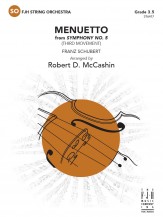 Menuetto from Symphony #5 (3rd Movement) by Franz Schubert/arr. Robert D. McCashin, Grade 3.5
Menuetto from Symphony #5 (3rd Movement) by Franz Schubert/arr. Robert D. McCashin, Grade 3.5
This minuet is so boistrous, it could be construed as a scherzo! Taken in “1” with light-hearted rhythms and chromatic melodies, it will fairly jump off the stage into your appreciative audience’s ears. The delightful melodies are primarily, but not totally, in the upper strings, but without the oom-pah-pah anchoring the accompaniment, it just wouldn’t be a minuet!
Andante from Symphony #4 by Felix Mendelssohn/arr. Robert S. Frost, Grade 4
The music of Mendelssohn is delightful to hear, but often challenging to perform. This selection, however, is accessible for developing string orchestras. The cellos and basses will find it particularly rewarding as they are featured with a walking bass line. In all respects this arrangement follows the original closely, with the necessary wind parts carried by upper strings.
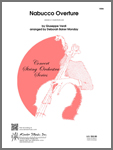 Nabucco Overture by Giuseppe Verdi/arr. Deborah Baker Monday, Grade 4
Nabucco Overture by Giuseppe Verdi/arr. Deborah Baker Monday, Grade 4
Every bit of Grade 4, this will take a mature group, but will increase their maturity by being worked on and performed! It will be very impressive and memorable when polished. Offering all the themes from the original overture, it will keep your students on the edge of their chairs since they are covering all the full orchestra parts with just strings. Being a full-sounding arrangement, it will increase your players sense of ensemble as they listen while they play. Make sure to keep the down-up-up bowing steady and you will have a piece to be proud of.
Concerto for Two Violins in D Major by Antonio Vivaldi/arr. Brendan McBrien, Grade 3
Adapted from Vivaldi’s Lute Concerto in D Major, this arrangement for two solo violins and orchestra creates an opportunity to feature your top violinists in the opening movement of this classic work. Your musicians and audience will be charmed by this Italian masterpiece which includes passages for solo cello and optional keyboard accompaniment to lend it that authentic flavor.
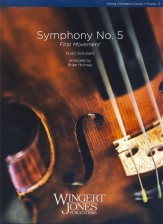 Symphony #5 (1st Movement) by Franz Schubert/arr. Brian Holmes, Grade 3
Symphony #5 (1st Movement) by Franz Schubert/arr. Brian Holmes, Grade 3
Here is a wonderful way to expose your students to Schubert’s legendary melodic writing – he was the “King of German Lieder” after all, which were 99% melody! Most people know his Unfinished Symphony, but his other symphonic works need to be appreciated as well. This impressive masterwork will really allow your group to shine. Since it is a full orchestra work that has been collapsed down to just strings, it will give everyone lots to do to get all the parts covered. It is in G major, but is filled with accidentals such as A#, D# and Bb, it gets your first violins up into third position and promotes feeling the pulse in “2” – so there is plenty of educational emphasis as well as just plain gorgeous music.
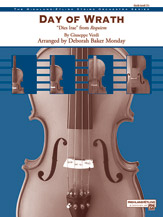 Day of Wrath (from Requiem) by Giuseppe Verdi/arr. Deborah Baker Monday, Grade 3.5
Day of Wrath (from Requiem) by Giuseppe Verdi/arr. Deborah Baker Monday, Grade 3.5
“Day of Wrath” (translated from the Latin “Dies Irae”), with its dramatic extremes of emotion, is the perfect choice for any concert or festival. Students may recognize it from the video game Mobile Strike! This setting by Verdi in his Requiem Mass was first performed in 1874 and now has been arranged by Deborah Baker Monday. Repeated sixteenth notes are used extensively along with divided parts to create a full, sonorous effect with huge dynamic contrasts from the fortissimo opening to the “morendo” ending.
Contact us for more recommendations, and shop Stanton’s for all your sheet music needs!
About the Author:
Dan C. has worked at Stanton’s since 1979, primarily with orchestra music and print promotions. A “working” musician, he’s a classical cellist, a rock & jazz bassist and a folk & country guitarist/singer. His free time is spent with family or reading, gardening, cycling and working puzzles. His series of musical puzzles (RP3 Rebus Puzzle Picture People) can be found on the Stanton’s Facebook page each Sunday. He also has a reputation as a pretty good joke teller. Seriously.